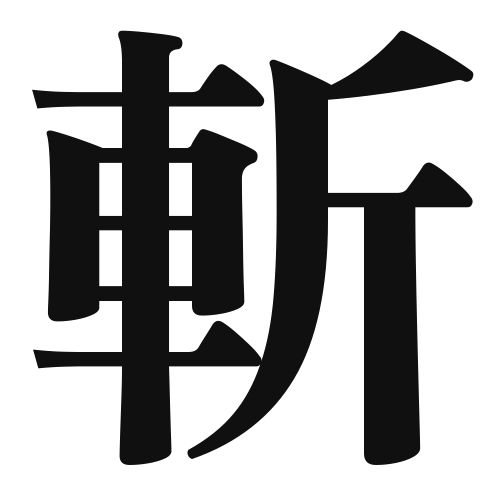1. Overview of Meaning
The kanji “斬” (zan) means “to cut” or “to slash.” It is often associated with a strong, decisive action, particularly in the context of swordsmanship or martial arts.
2. Formation and Radical
Formation of the Kanji: The kanji “斬” is a compound character that combines elements to convey its meaning. It consists of the radical “刀” (katana), which means “sword,” and the phonetic component “斬,” which suggests the action of cutting.
Radical: The radical of “斬” is “刀” (katana), indicating its connection to cutting or slicing actions.
3. Examples of Usage
Common Words and Phrases: Some common words that include “斬” are “斬新” (zanshin – brand new) and “斬首” (zanshu – beheading).
Example Sentences in Daily Conversation:
- 彼は敵を斬った。 (Kare wa teki o kitta.) – He slashed the enemy.
- この刀は非常に斬れる。 (Kono katana wa hijō ni kireru.) – This sword can cut very well.
4. Synonyms and Antonyms
Similar Kanji: A similar kanji is “切” (setsu), which also means “to cut,” but it is more general and can refer to cutting in various contexts, not just with a sword.
Opposite Kanji: An antonym is “繋” (ke – to connect), which implies joining or linking rather than cutting or separating.
5. Cultural and Historical Background
Relation to Japanese Culture: The kanji “斬” is often found in samurai culture, where the act of cutting with a sword is a significant aspect of martial arts and honor.
Proverbs and Idioms: One common phrase is “斬新なアイデア” (zanshin na aidea), meaning “a cutting-edge idea,” which reflects innovation and originality.
